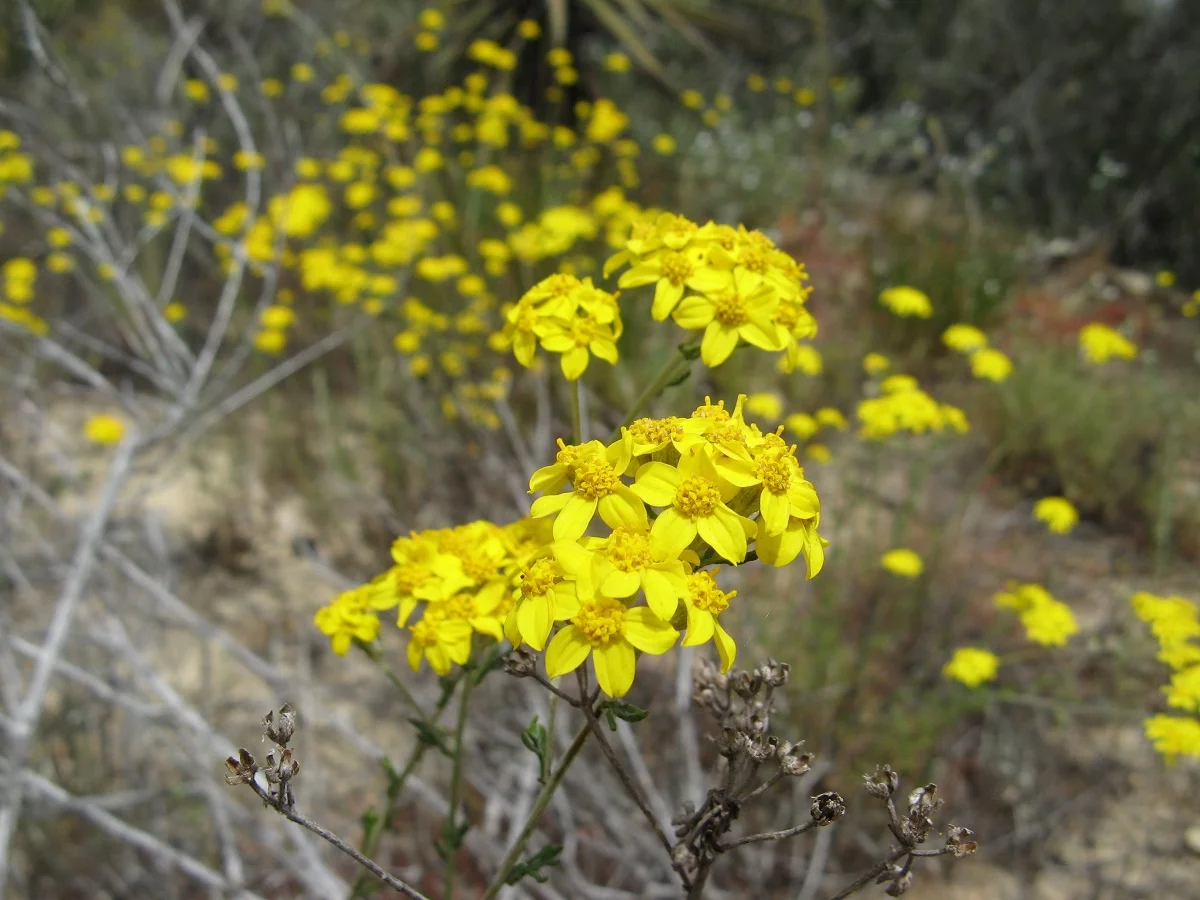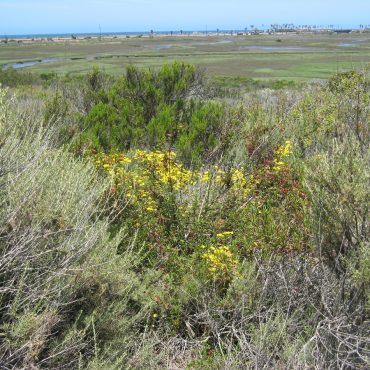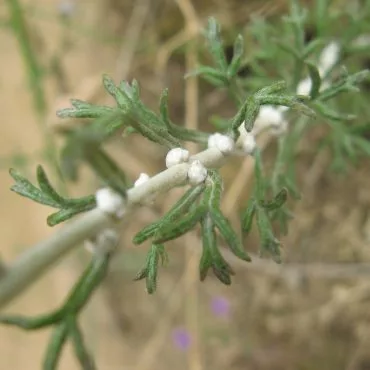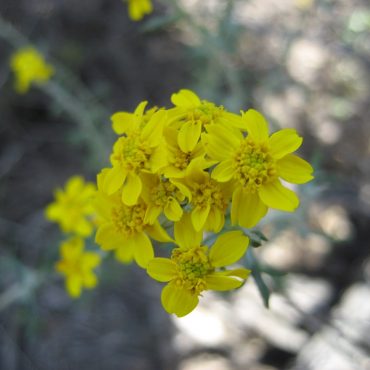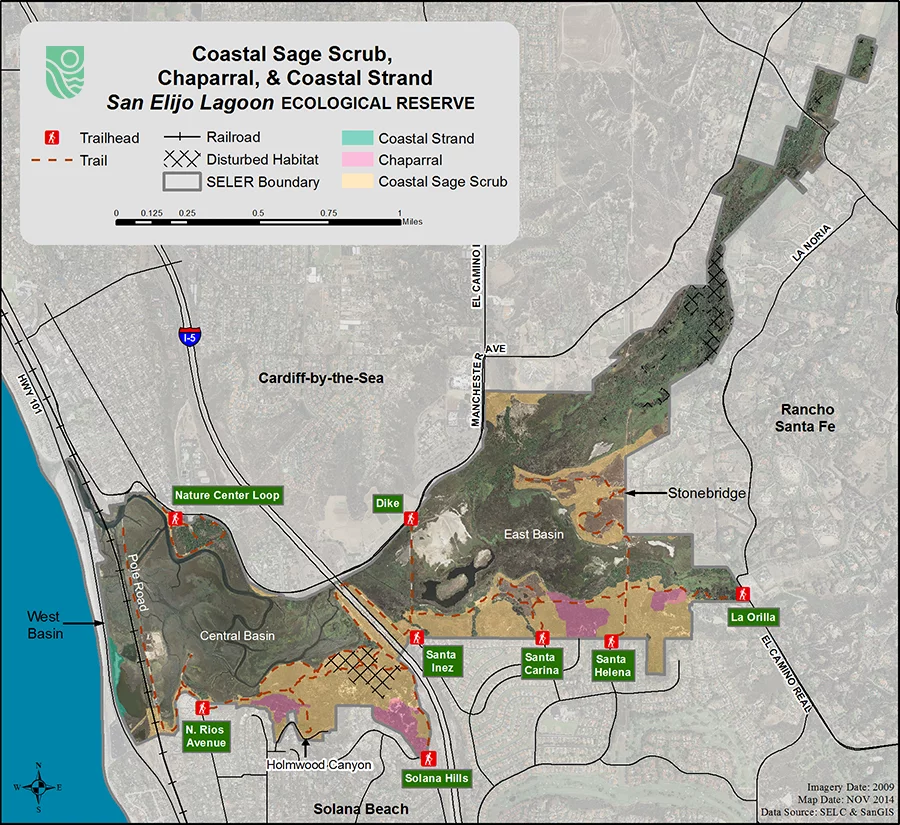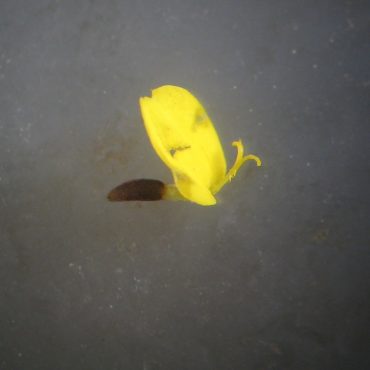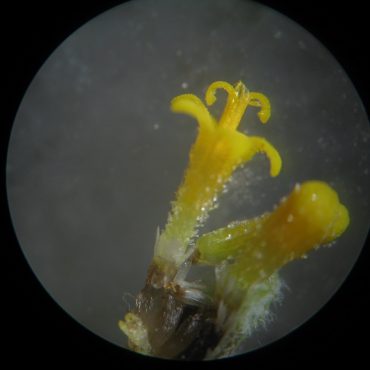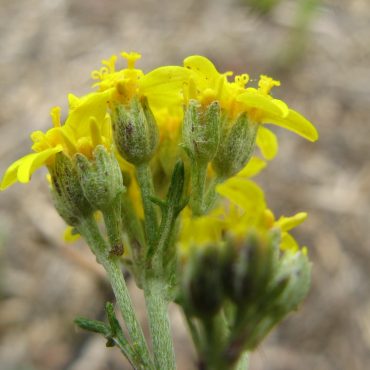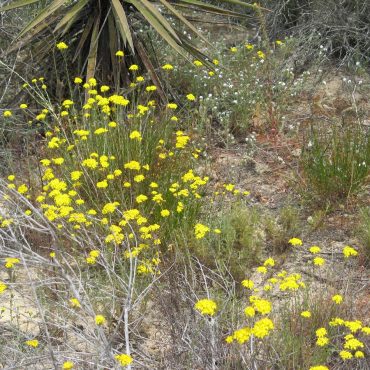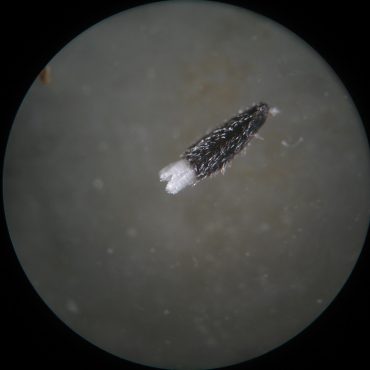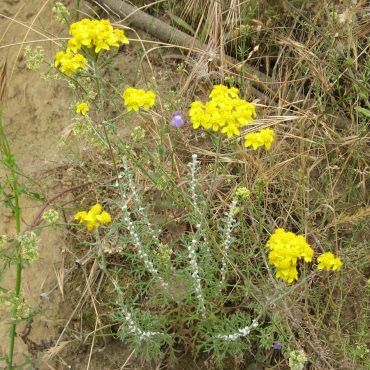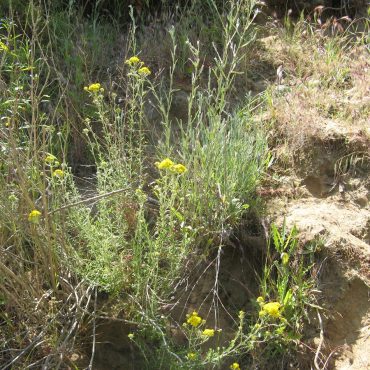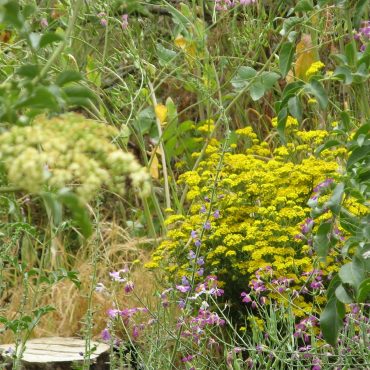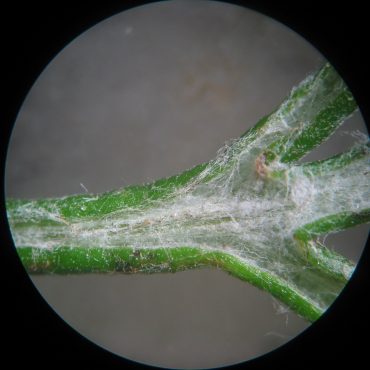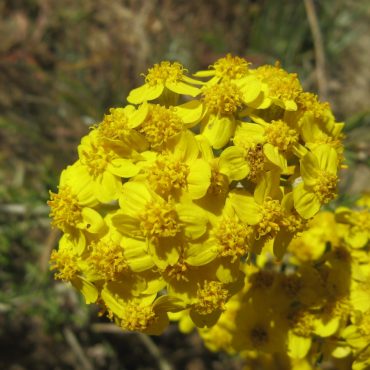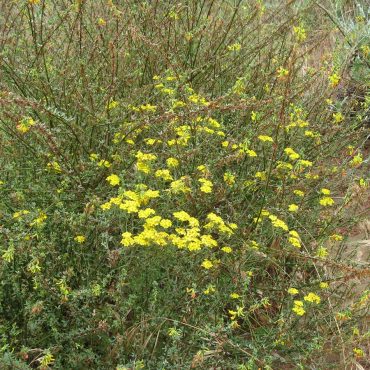Classification
Golden yarrow is a dicot angiosperm in the sunflower family, Asteraceae.2 This is the largest family of vascular plants in the Northern Hemisphere.143 “Flowers” of Asteraceae are made up of one or both of two types of flowers: symmetrical disk florets and strapped-shaped ray florets. These are crowded onto a common base (receptacle) and together are called a flower head.44,49,143 A flower head is often mistaken for a single flower. Other familiar Asteraceae that occur in the Reserve include California sagebrush(Artemisia californica), bush sunflower (Encelia californica), and goldenbush (Isocoma menziesii).48
Species in the genus Eriophyllum are characterized in part by the presence of both ray and disk florets, by a single series of overlapping phyllaries beneath each flower head, by flower heads in more or less flat-topped clusters, and by a pappus that is absent or is reduced to a crown of jagged scales.2
Golden yarrow is a variable species with two varieties in California, separated by the number of flower heads in a cluster. The variety in the Reserve is var. confertifolium.48
In spite of the common name and flat-topped flower cluster, golden yarrow is not closely related to common yarrow (Achilleamillefolium). Both are in the sunflower family, but that is a large family variously subdivided into subfamilies and/or tribes.11,41,143 The two yarrow species belong to different tribes.143
Jepson eFlora Taxon Page

